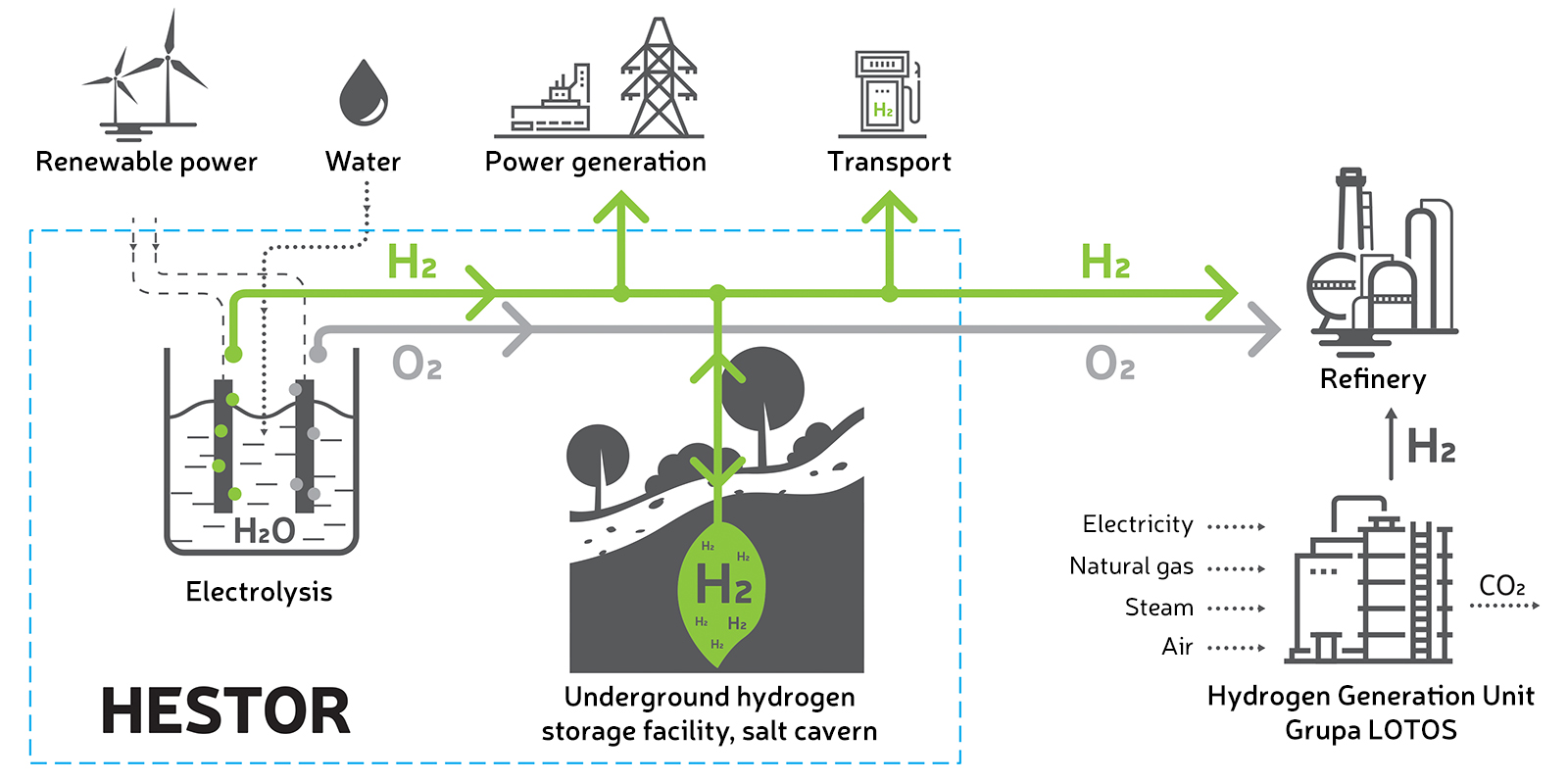
Hydrogen as an energy source − HESTOR
- At the LOTOS Group we are analysing the efficiency of storing hydrogen obtained from surplus renewable energy.
The research project combines environmental protection with innovation and aims to develop a technology for storing hydrogen as an energy carrier. Grupa LOTOS is the leader of the project consortium comprising AGH University of Science and Technology in Kraków, Silesian University of Technology, Warsaw University of Technology, CHEMKOP and GAZ-SYSTEM.
The purpose of the project is to investigate the efficiency of salt-cavern storage of hydrogen produced from excess wind and solar power through electrolysis. Hydrogen obtained in this way could be used in technological processes at the refinery and for electricity generation in gas turbines. If successful, the project could lead to a substantial reduction in CO2 emissions.
The HESTOR project, or underground caverns for storing surplus electricity in the form of hydrogen, will deliver the following environmental benefits over ten to twenty years:
- Solution for storing and recovering surplus energy in an environmentally-friendly way with no additional emissions generated, as hydrogen is the cleanest energy carrier,
- Environmental safety of underground energy storage facilities, similar to that of existing underground gas, oil and fuel storage facilities,
- Higher efficiency and environmental safety of underground storage relative to hydro power plants,
- Better use (in technical and economic terms) of periodic energy excess from power plants and combined heat and power plants, resulting in a substantial reduction of CO2 emissions,
- Easier integration of large wind and solar farms into the power system,
- Reduced combustion of conventional fossil fuels,
- Advancement of fuel cell vehicles and reduction of exhaust emissions,
- Posibility of utilising carbon dioxide by using hydrogen in methane production.

